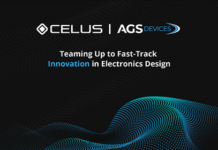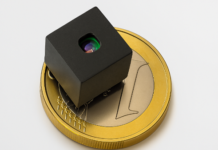
Abstract
This paper presents a low-cost brain-computer interface integrated with an SDK for a mobile application. The system features an 8-channel device based on the ADC1299, with data transmitted via Bluetooth from an STM32 microcontroller. The device is specifically designed to be compact, making it ideal for wearable applications. Additionally, the mobile SDK is developed for easy integration into personal user projects. As a result, this device serves as an excellent solution for both researchers and innovators seeking reliable hardware for neurosensing applications.
1. Introduction
Electroencephalography (EEG) is one of the simplest and most affordable ways to record brain activity. It works by detecting electrical signals from different parts of the brain using electrodes placed on the scalp. EEG is widely used in both research and clinical settings, and its applications continue to grow. Previously, we explored several devices for acquiring EEG data using platforms such as Arduino, Raspberry Pi, and Jetson Nano. These devices are suitable for learning neuroscience, but now we want to introduce a non-medical device for applied tasks.
2. Problem Statement and Motivation
Commercial EEG devices often cost thousands of dollars, making them less accessible for many researchers. Importantly, this high cost doesn’t always reflect complexity in manufacturing. Recently, interest in Brain-Computer Interfaces (BCIs) has grown significantly, especially with the rise of neural networks and advanced signal processing techniques. Back in 2016, Meng et al. used neural networks to control a robotic arm using brain signals detected through motor imagery. Previously, such results were only possible with invasive techniques, like implanting microelectrode arrays directly into the brain. These invasive methods involve placing electrodes on the brain surface and recording signals directly from the cerebral cortex. However, they are expensive, risky, uncomfortable, and require specialized staff and equipment. For these reasons, affordable and non-invasive EEG devices are gaining more attention. For this reason, many researchers seek the ability to quickly test their ideas from non-invasive technology in real-world scenarios. This typically requires a compact, wearable device that is easy to deploy. In response to this need, we have developed such a device, along with a mobile application for real-time data acquisition and a software development kit (SDK) to support further customization and integration. The external appearance of the device is shown in Figure 1.

3. Materials
There are different types of sensors used to record brain signals, such as wet vs. dry electrodes or contact vs. non-contact ones. Wet electrodes are the most commonly used because they have low electrical resistance—about 200 kΩ before applying gel and around 5 kΩ after. Li et al. studied the pros and cons of both wet and dry electrodes and found that each type has its own benefits and drawbacks. A separate study reviewed the development of dry electrodes from 2010 to 2021. In this paper, we chose to use dry electrodes because they are easier to use—no gel is needed.
For analog-to-digital conversion, we selected the ADS1299 unit from Texas Instruments, a device that has long been recognized as one of the top-performing ADCs for EEG applications. Its standout feature is the built-in multiplexer, which sets it apart from many competitors. The capabilities of the ADS1299 and its multiplexer have been extensively reviewed by us in the paper; therefore, a detailed discussion is beyond the scope of this article. We used eight dry Ag/AgCl electrodes arranged according to the International 10-20 Electrode Placement System, specifically at positions F7, Fz, F8, C3, C4, T5, Pz, and T6. Our system, ronbci, consists of three separate circuit boards:
ADC Board – responsible for EEG data acquisition.
BLE Board – handles data transmission via Bluetooth Low Energy.
Power Board – supplies power to the entire system.
The layout of the equipment and electrodes is shown in Figure 2.

4. Software
To develop the mobile application and handle EEG data acquisition, we used the Dart programming language, which is widely adopted for building cross-platform apps, particularly with the Flutter framework. The entire project was implemented in an open-source format, allowing developers and researchers to easily modify and extend the application for various use cases such as stress monitoring, mental health tracking, cognitive load analysis, and more. The application allows you to visualize EEG data in real time, adjust the parameters of the bandpass filter and save the data. Figure 3 shows the data reading process.

We developed the SDK in Python due to its simplicity, readability, and widespread use in the scientific and developer communities. Python’s extensive ecosystem of libraries and tools for data processing, machine learning, and signal analysis makes it an ideal choice for working with EEG data. This ensures that researchers and developers can easily integrate the SDK into their workflows and extend it for various neuroscience and health-related applications. Figure 4 shows the process of reading data via the Python SDK.

5. Data Evaluation
5.1. Artefacts Test
The internal noise level of the ironbci system is less than 1 µV. We conducted several tests to check how common artifacts, such as blinking and chewing, appear in the EEG signals. In our experiments, both blinking and chewing produced noticeable artifacts that clearly stood out from the normal EEG signal, as shown in Figure 5.

Figure 5. The measurement of chewing and blinking artifacts using dry electrodes placed at the Fz location.
Chewing was performed in a sequence of 4, 3, 2, and 1 repetitions, followed by the same sequence for blinking. The y-axis represents the processed EEG signal in microvolts, filtered between 1–40 Hz, with a sampling rate of 250 samples per second. The data and processing code are available at: Python GitHub
5.2. Alpha Test
Alpha waves (α-waves) are brain signals in the 8–12 Hz frequency range, typically with amplitudes between 35 and 65 µV. These waves are commonly observed in relaxed individuals who are awake with their eyes closed, making them a useful benchmark for testing EEG systems. In our experiment, EEG signals were recorded for 5 seconds each, with the subject’s eyes both open and closed. As expected, there was a noticeable increase in signal amplitude within the 8–12 Hz range when the eyes were closed. Conversely, alpha wave activity decreased when the eyes were open. These results are consistent with typical alpha wave patterns in the occipital region of the brain, confirming that the device is functioning correctly. Figure 6.

6. Conclusion and Discussion
This article showcases the uniqueness of the presented device by emphasizing its rare combination of low cost and high accuracy. A key strength of this work lies in its validation of signal quality through established methods, including the detection of well-known EEG artifacts (e.g., blinking and chewing) and alpha wave activity. These tests confirm the system’s capability to reliably capture brain signals.
Moreover, the article highlights that the device’s noise characteristics are consistent with those of the widely respected ADS1299 chip from Texas Instruments. This comparison reinforces the high quality of the proposed low-cost board, demonstrating that affordability does not come at the expense of performance.
The system also ensures fast and reliable data transfer between the analog-to-digital converter (ADC) and the processor, with no noticeable delays, making it well-suited for real-time brain-computer interface (BCI) applications. This opens promising possibilities for future research and development in wearable neurotechnology.
To encourage further innovation and collaboration, the entire software stack has been released as open-source. We hope this initiative will support the development of a robust EEG dataset and invite others to contribute to ongoing efforts in data collection, analysis, and application development.
7. Prospect
Looking ahead, this compact and portable device offers the flexibility to be used anytime and anywhere, supporting continuous EEG monitoring in real-world environments. Its seamless integration with the mobile SDK application makes it easy to incorporate into a wide range of projects and workflows. Figure 7.

Future developments could include expanding the number of EEG channels up to 32, enabling more detailed brain signal acquisition for advanced applications. The device’s versatility makes it suitable for diverse purposes—from practical uses such as brain-controlled robotics and assistive technologies to cutting-edge research and innovation in startups. This broad applicability positions the device as a valuable tool for both scientific exploration and real-world problem-solving.
YouTube video introduction https://www.youtube.com/watch?v=gWpfsLuq_eE
For more information visit here.














